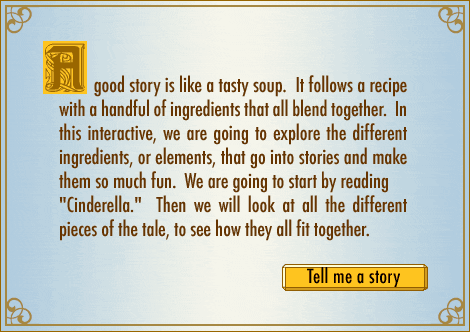When crafting your story – there are only 9 key story lines in all of history. Murray’s business books can be found on amazon. All books, movies & any story you’ve ever have been told, fits into one of these 9.
Aspirations and beliefs. More than any other topic, people like to hear about aspirations and beliefs. (This may be why religion is the most popular word-of-mouth topic, ever.) Sun Microsystems’ Scott McNealy’s point of view about ending the digital divide is aspirational as is Patagonia founder Yvon Chouinard’s views about how companies can grow by reducing pollution and creating more sustainable business strategies. Aspirations are helpful because they help us connect emotionally to the speaker, the company, and the issues. They help us see into a person or company’s soul.
David vs. Goliath. In the story of David and Goliath, the young Hebrew David took on the Philistine giant Goliath and beat him. It is the way Southwest Airlines conquered the big carriers, the way the once unknown Japanese car manufacturers took on Detroit, and the way social media is taking on the media giants. Sharing stories about how a small organization is taking on a big company is great business sport. Rooting for the underdog grabs our emotions, creates meaning, and invokes passion. We like to listen to the little guy talk about how he’s going to win and why the world—or the industry—will be a better place for it.
Avalanche about to roll. The mountain is rumbling, the sun is getting stronger, but the rocks and snow are yet to fall. You want to tune in and listen to the “avalanche about to roll” topic because you know that there’s a chance that you will be killed if caught unaware. This theme taps into our desire to get the inside story before it’s widely known. It’s not only interesting to hear someone speak about these ideas, they have the ingredients for optimal viral and pass-along effect.
Contrarian/counterintuitive/challenging assumptions. These three themes are like first cousins, similar in many ways but slightly different. Contrarian perspectives defy conventional wisdom; they are positions that often are not in line with—or may even be directly opposite to—the wisdom of the crowd. The boldness of contrarian views grabs attention; the more original and less arrogant they are, the more useful they will be in provoking meaningful conversations.
- Counterintuitive ideas fight with what our intuition (as opposed to a majority of the public) says is true. When you introduce counterintuitive ideas, it takes people a minute to reconcile the objective truth with their gut assumption about the topic. Framing views counter to how we intuitively think about topics—going against natural “gut instincts”—pauses and then resets how we think and talk about concepts.
- Challenging widely-held assumptions means that when everyone else says the reason for an event is X, you show that it’s actually Y. Challenging assumptions is good for debate and discussion, and especially important in protecting corporate reputation.
- Anxiety is a cousin of the avalanche about to roll, but it is more about uncertainty than an emerging, disruptive trend. Examples of anxiety themes abound: (1) Financial services companies urging baby boomers to hurry up and invest more for retirement: “You’re 55. Will you have your needed $3.2 million to retire comfortably?” (2) Tutoring companies planting seeds of doubt about whether our kids will score well enough on various tests to get into a good university. Although anxiety themes grab attention, go easy. People are becoming sceptical, and rightly so. Too many politicians, companies have bombarded us with FUD (fear, uncertainty and doubt) with no facts to back up their point.
Personalities and personal stories. There’s nothing more interesting than a personal story with some life lessons to help us understand what makes executives tick and what they value the most. The points of these personal stories are remembered, retold, and instilled into organizational culture. Robert Goizueta, the respected CEO of Coca-Cola, said he hated giving speeches but he was always telling stories—often personal ones about how he and his family had to flee Cuba when Castro took control and had nothing more than his education.
Similarly, when Steve Jobs gave the commencement address to Stanford University in June 2005, he shared his personal story and life lessons. That commencement address, “Stay Hungry. Stay Foolish,” was talked about on thousands of blog and was published verbatim in Fortune magazine. It helped us see Jobs in a new light.
How-to stories and advice. Theoretical and thought-provoking ideas are nice, but people love pragmatic how-to advice: how to solve problems, find next practices, and overcome common obstacles. To be interesting, how-to themes need to be fresh and original, providing a new twist to what people already know or tackle thorny issues like how to get IT and marketing organizations to work together despite deep culture clashes between the two.
Glitz and glam. Robert Palmer sang about being addicted to love. Our society is more addicted to glamour and celebrity. Finding a way to logically link to something glitzy and glamorous is a surefire conversation starter. For example, tagging on to the widespread interest in the Academy Awards, Randall Rothenberg, former director of intellectual property at consultancy Booz Allen-Hamilton, last year talked about the similarity and challenges between creating new “star” product brands and movie stars.
Seasonal/event-related. Last, and least interesting but seems to resonate, is tying your topic into seasonal or major events. Talking about industry predictions around the New Year, advertising during Grand Finals, executive compensation reform when an executive of a well known company “resigns” with an especially bloated compensation package are examples of this type of story.

